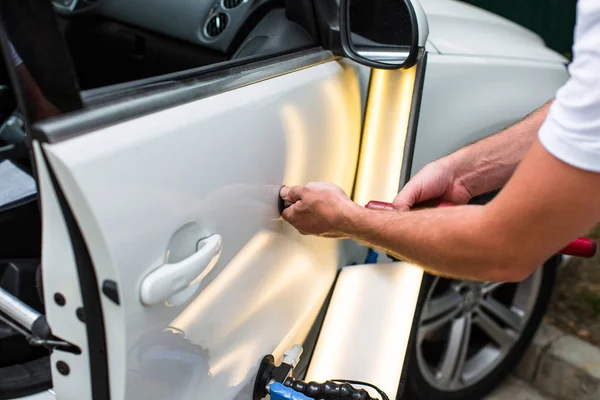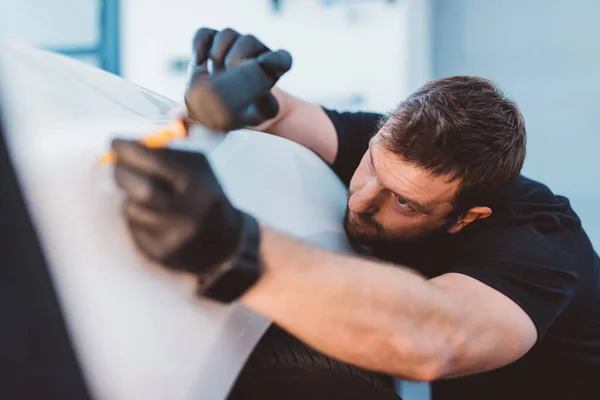Comprehensive Guide To Professional Dent Repair Techniques For Auto Body Perfection
Dents and dings on vehicles are inevitable. Whether caused by hail, minor accidents, or careless drivers in parking lots, they can tarnish the overall appearance of your car. Restoring a vehicle's body to its original condition requires specialized techniques, tools, and a keen understanding of the material properties of metal and paint. Professional dent repair goes beyond simple fixes, and there are several methods that auto body experts use to achieve perfection.
Understanding Dent Types and Their Impact
Understanding the types of dents is crucial for effective repair. Dents can be categorized as shallow or deep, with shallow dents typically affecting only the paint surface and deep dents impacting the underlying metal. The extent of the damage, along with the vehicle's metal and paint characteristics, determines the appropriate repair method. This knowledge ensures that technicians select the best approach for restoring the vehicle’s appearance and integrity.
Popular Dent Repair Techniques
Paintless Dent Repair (PDR)
Paintless Dent Repair (PDR) is a highly effective method for restoring the original shape of a vehicle's body without damaging the paint. This technique involves using specialized tools to gently push or pull dents from behind the panel, preserving the vehicle’s factory finish. PDR is particularly suitable for minor dents caused by hail or door dings, as it requires minimal time and cost. Its advantages include maintaining the vehicle's resale value and providing a quick turnaround for repairs.

Traditional Dent Repair
For larger dents or those that have damaged the paint, traditional dent repair methods are required. This process is more involved and includes several steps:
- Sanding and filling: The first step in traditional dent repair involves sanding down the area surrounding the dent to remove any damaged paint. The dent is then filled with a body filler compound, which hardens to create a smooth surface.
- Shaping and sanding: Once the filler has dried, technicians carefully shape and sand it to match the contours of the vehicle. This step requires precision to ensure the repair is seamless and blends with the rest of the body.
- Priming and painting: After shaping, the area is primed and painted to match the vehicle’s original color. A clear coat is then applied to protect the new paint from UV rays and environmental damage.
Traditional dent repair is effective for more severe damage, but it can be time-consuming and more expensive due to the need for painting and finishing.
Hot Glue Dent Repair
Hot glue dent repair is a method used primarily for minor dents that cannot be accessed from behind the panel. In this technique, hot glue is applied to specialized tabs that are then attached to the dented area. Once the glue cools and hardens, a pulling device is used to gently extract the dent from the surface. This method is less invasive than traditional repairs and can effectively restore the panel's appearance without significant paint damage, provided it is executed with care.
Heat and Cold Repair Methods
Temperature can play a significant role in dent removal, particularly for small, shallow dents. Professionals often use heat or cold to manipulate the metal back into its original form.
- Heat repair: This method involves applying heat, usually with a heat gun, to the dented area. Once the metal is sufficiently warm, it becomes more pliable, allowing technicians to reshape it using specialized tools.
- Cold repair: Conversely, cold repair methods use dry ice or compressed air to rapidly cool the dented area. The sudden temperature drop causes the metal to contract, often resulting in the dent popping out naturally.
Heat and cold methods are best suited for very small, shallow dents and may not be effective for larger or deeper damage.
Specialized Tools in Dent Repair
Dent Pullers
Dent pullers are vital tools for restoring damaged vehicle panels. They use suction or adhesive to grip the dented area, allowing technicians to pull the metal back into shape. Suction pullers are effective for small, rounded dents, while adhesive pullers work best on larger or irregular dents. These tools enable gentle extraction, preserving the paint surface and ensuring a seamless repair.

Hammer and Dolly Set
A hammer and dolly set is a fundamental tool used in dent repair to reshape metal surfaces accurately. The hammer taps the dented area, while the dolly supports the panel from behind, facilitating precise adjustments. This technique is particularly effective for larger dents that require careful manipulation. When used correctly, it helps restore the vehicle's original contours and achieve a seamless finish.
Body Filler and Sanding Blocks
Body filler, often called Bondo, is essential for filling dents and surface imperfections in vehicle repairs. After application, technicians use sanding blocks of different grit levels to shape and smooth the filler, ensuring it blends seamlessly with the original surface. This careful process prepares the area for priming and painting, ultimately achieving a flawless finish and restoring the vehicle’s aesthetic appeal.
Factors Affecting the Success of Dent Repair
Paint and Finish Quality
Maintaining the integrity of the vehicle's original paint is critical in dent repair. Damage to the paint surface can lead to rust or further deterioration if not properly handled. While techniques like PDR preserve the original paint, traditional methods involving body filler and repainting require perfect color and finish matching to ensure the repair is seamless and invisible, blending smoothly with the vehicle's overall appearance.
Type of Metal and Dent Location
The type of metal greatly influences dent repair methods. Steel is more flexible and easier to reshape than aluminum, which is more rigid and challenging to work with. Dents on flat surfaces are simpler to repair, while those near edges or curved areas, like bumpers or wheel arches, are more complex. These locations often require specialized tools and techniques for precise restoration.
Dent Werx Paintless Dent Repair
Houston, Texas - United States
Phone: +1-832-275-4374

